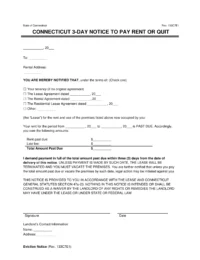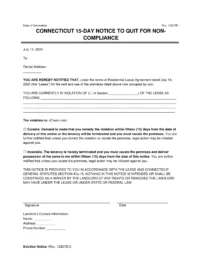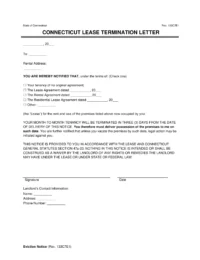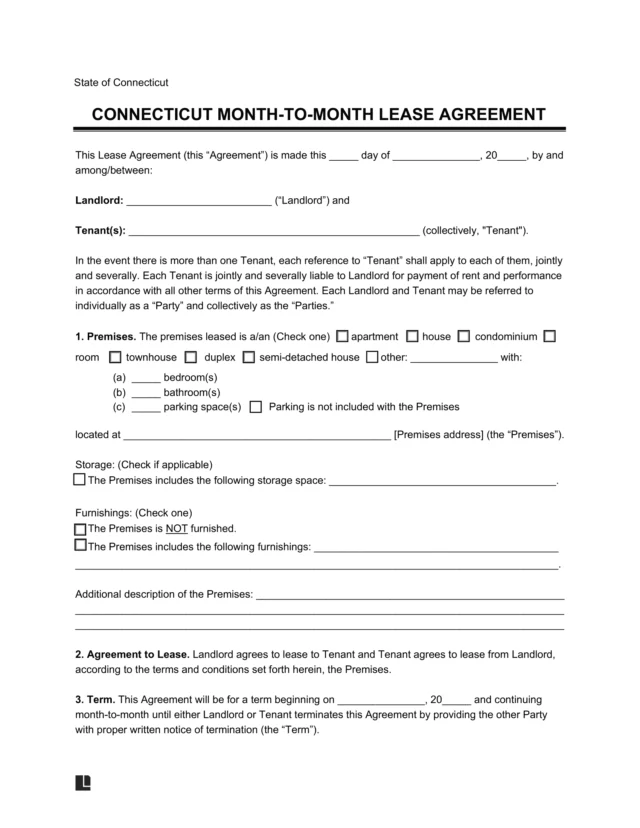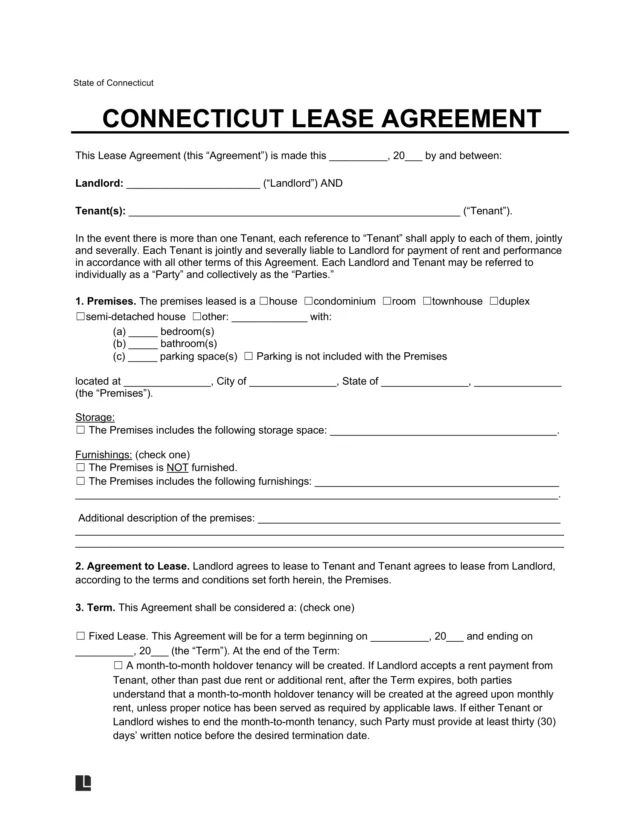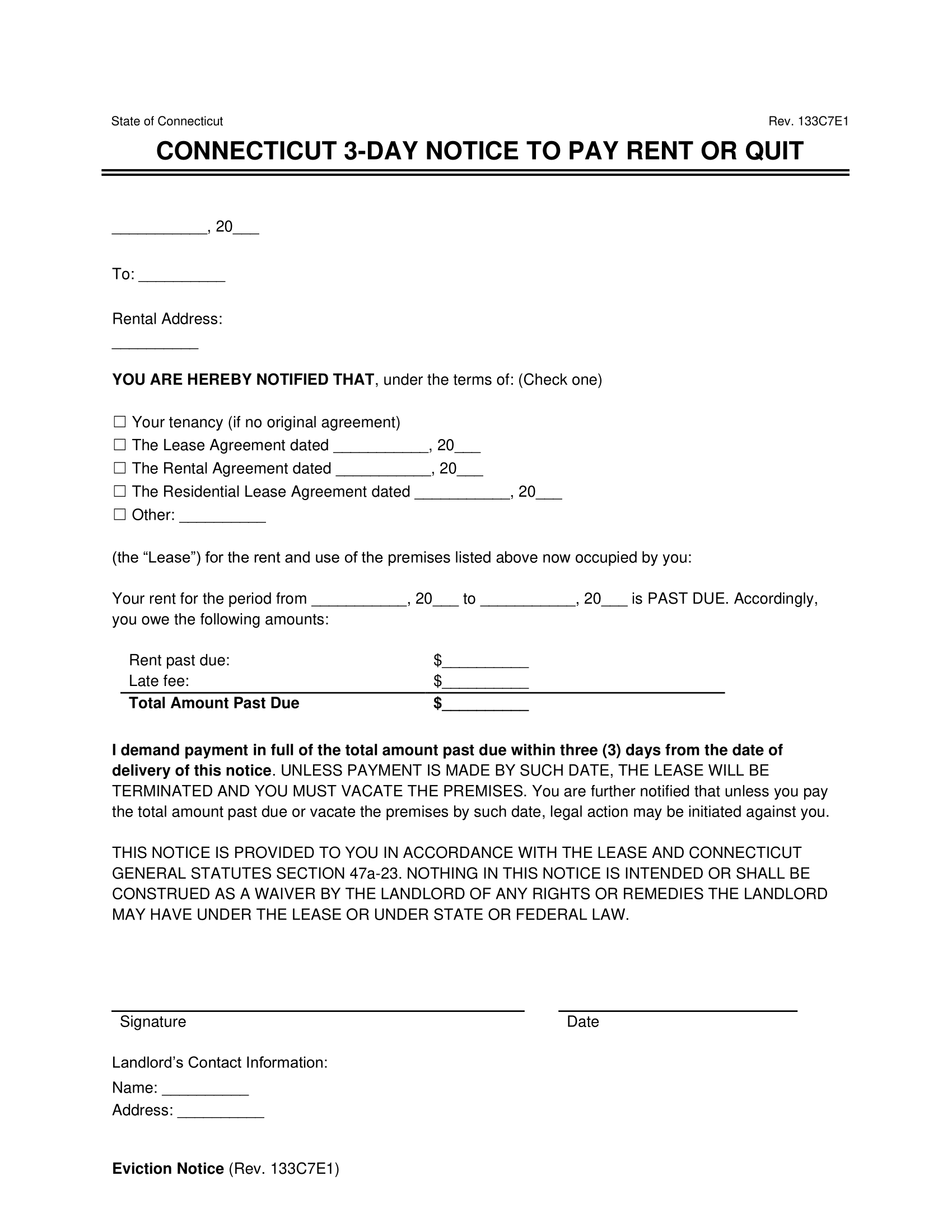Understanding Eviction Notices in Connecticut
Before a landlord in Connecticut can begin the eviction process, they must first serve a valid notice to quit. The required notice period depends on the reason, such as unpaid rent, a lease violation, or ending a month-to-month agreement, and must follow the rules set out in Title 47a of the Connecticut General Statutes.
With Legal Templates’ document editor, landlords can easily create a Connecticut eviction notice that meets state requirements. Just answer a few simple questions and generate a customized form ready to download and serve.
Types of Eviction Notices in Connecticut
Connecticut requires different eviction notices depending on the issue, such as rent nonpayment or lease non-compliance, and each has its own required notice period.
3-Day Notice to Pay Rent or Quit
If a tenant hasn’t paid rent, landlords must serve a 3-day notice to pay rent or quit before filing for eviction. This notice gives the tenant 3 days to pay the overdue rent or vacate the unit. Under Connecticut General Statutes Section 47a-15a , landlords cannot file an eviction until after this notice period ends, and they must honor the required grace period — typically 9 days for monthly leases and 4 days for week-to-week tenancies—before serving the notice.
3-Day Notice to Pay Rent or Quit
Gives tenants three days to pay past-due rent before the eviction process can proceed in court.
15-Day Notice to Quit for Non-Compliance
When a tenant violates a lease term, such as damaging the unit, violating pet policies, or breaching occupancy rules, landlords may serve a 15-day notice to quit. As outlined in CT Gen. Stat. § 47a-15, tenants must be given 15 days to cure the issue or vacate. If the tenant remedies the violation within that time, the eviction cannot proceed.
15-Day Notice to Quit for Non-Compliance
During the 15-day notice period, tenants may have the option to fix (or “cure”) the lease violation.
3-Day Notice to Terminate Month-to-Month Tenancy
Connecticut law allows landlords to end a month-to-month tenancy with a 3-day notice to quit. While CT Gen. Stat. § 47a-23 doesn’t require a specific advance period for ending a tenancy at will, the standard practice is to give 3 days’ written notice before beginning the legal eviction process.
3-Day Notice Lease Termination
Lets a tenant know that you’re ending a month-to-month lease and that they must prepare to leave your property.
How to Evict a Tenant in Connecticut:
CT Gen. Stat. chs. 830 and 832 govern evictions in the state (also known as the summary process). Follow these steps to evict a tenant in Connecticut:
Step 1: Serve Notice
The landlord must first serve the tenant with an eviction notice that states the reason for the eviction (one or more lease violations). Those reasons could include non-payment of rent, violating the lease/rental agreement, illegal activity in the dwelling unit, or terminating a monthly tenancy.
The length of time required for the notice or any grace period depends on the reason for eviction. You can serve the tenant with an eviction notice using personal service, mail, or a process server. This formally starts the eviction process.
Step 2: File Eviction
If a tenant hasn’t responded (i.e., paid the past-due rent) or moved out within the time specified in the notice, landlords may file a summons and complaint with the Superior Court in their county.
Step 3: Issue Summons and Complaint
The next step in the eviction process is for the Superior Court to set a hearing date and issue the summons and complaint to be served on the tenant.
Step 4: Tenant Answers or Defaults
If the tenant wants to contest the eviction, they must file an appearance with the Superior Court and a written answer to the summons and complaint within the timeframe indicated on the summons.
If the tenant fails to respond, the landlord may bring a default motion for judgment for the tenant’s failure to appear or file pleadings to get a court judgment and order for possession.
Step 5: Court Sets Trial Date
If the tenant files an answer to the complaint, a trial date is typically set between seven and ten days after the answer is filed. If tenants fail to show up for the court date, landlords may win a default judgment on their case.
Step 6: Court Issues Judgement
If the landlord wins (by default judgment if a tenant fails to show up for the hearing), a judicial officer enters a judgment against the tenant, and the landlord can request an execution order to remove the tenant from the premises.
A state marshal serves this court order on the tenant. The tenant then has 24 hours to leave the premises, or their belongings may be placed in storage.
Step 7: Tenant Appeals or Moves Out
The tenant has five days after the judgment to file an appeal. During that time, the landlord can’t execute the judgment (stay of execution). Only the state marshal can forcibly remove a tenant from a rental unit.
If the tenant files an appeal, the stay of execution extends until after the appeal process is complete unless the court finds the appeal was made merely for delay or other improper purposes (the maximum stay is three months). Remember that landlords must return any refundable portions of security deposits when tenants move out.
Documenting the property condition with a Rental Inspection Checklist is a good idea, as it’s easier to determine what damages are normal wear and tear and what are excessive.
Related Connecticut Court Forms
- Notice to Quit (End) Possession: Notice a landlord provides notice to quit to the tenant to leave the rental unit for failing to pay the rent due.
- Summary Process (Eviction) Complaint, Nonpayment of Rent: This document begins the eviction lawsuit for non-payment of rent, stating the facts of the tenancy and non-payment.
- Summons – Summary Process (Eviction): Served with the complaint to notify the tenant they’re being evicted and what they must do.
- Summary Process (Eviction) Complaint, Termination of Lease by Lapse of Time: This document begins the eviction process for lease termination.
- Summary Process (Eviction), Answer to Complaint: The tenant answers the eviction lawsuit with this document, argues in their defense, and provides any proof of wrongdoing by the landlord, such as uninhabitable living conditions or accepting full payment of rent while proceeding with the eviction.
- Motion for Default for Failure to Appear and Judgment for Possession: The landlord files this if the tenant doesn’t appear in the eviction lawsuit.
- Motion for Judgment for Possession for Failure to Plead: The landlord files this if the tenant doesn’t file an answer to the eviction lawsuit.
- Reply to Special Defenses: The landlord may respond to the tenant’s defenses to the eviction.
- Summary Process Execution for Possession (Eviction): The court issues this document after the landlord wins the court case and is used to remove the tenant from the rental premises (only a state marshall can forcibly remove the tenant).

